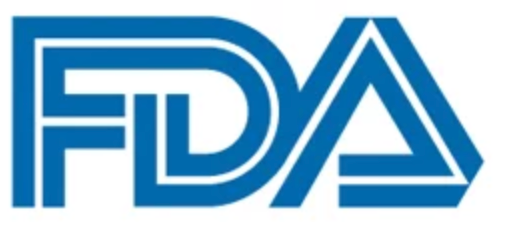FDA Grants Breakthrough Therapy Designation to IMGN632 in Relapsed/Refractory Blastic Plasmacytoid Dendritic Cell Neoplasm
The FDA has granted a breakthrough therapy designation to IMGN632 for the treatment of patients with relapsed or refractory blastic plasmacytoid dendritic cell neoplasm.

The FDA has granted a breakthrough therapy designation to IMGN632 for the treatment of patients with relapsed or refractory blastic plasmacytoid dendritic cell neoplasm (BPDCN), according to an announcement from ImmunoGen, Inc, the drug developer.1
The designation was based on data from the BPDCN cohort of the first-in-human phase 1/2b trial (NCT03386513) of the CD123-targeted antibody-drug conjugate (ADC). Results presented during the 2019 ASH Annual Meeting showed that IMGN632 showcased preliminary activity in this patient population, along with those who had relapsed/refractory acute myelogenous leukemia (AML).2
Specifically, results showed that 2 of 9 patients with BPDCN achieved a complete response with or without complete hematologic recovery (CR/CRi) and 1 patient experienced a partial response. Moreover, 13 of 71 patients with AML achieved a CR/CRi with the ADC. Notably, responses were reported across the patient subsets represented in the overall study population, and in the majority of cases, they occurred following the first or second dose of IMGN632.
Updated data from the trial will be presented at the 2020 ASH Annual Meeting, according to ImmunoGen.
“We are pleased [the] FDA has granted breakthrough therapy designation for IMGN632, our novel CD123-targeted ADC, as it underscores the urgent need for effective and well-tolerated treatments for patients with this rare and aggressive. Cancer,” Mark Enyedy, president and chief executive officer of ImmunoGen, stated in a press release. “We look forward to continuing to work with [the] FDA to further define the development path for IMGN632 in AML and other hematological malignancies.”
IMGN632 uses a novel indolino-benzodiazepine (IGN) payload, which alkylates DNA without crosslinking, according to ImmunoGen. IGNs have been developed to have a high potency against AML blasts, with less toxicity to normal marrow progenitors compared with other DNA-targeting payloads.
Preclinical data have demonstrated the effectiveness of the ADC in AML, BPDCN, and B-cell acute lymphoblastic leukemia models. Additionally, laboratory studies have shown that the agent results in increased antitumor activity when used in combination with other existing agents that are available for hematologic malignancies.3
In the phase 1 trial, investigators set out to determine the maximum-tolerated dose of IMGN632, as well as the phase 2 dose and optimal dosing schedule for its use as a single agent in patients with relapsed/refractory AML and BPDCN. Secondary end points of the research were focused on understanding the safety and tolerability of the ADC, its preliminary antileukemic activity, and its pharmacokinetic profile when used in AML and BPDCN.
To be eligible for inclusion on the trial, patients had to have CD123-positive relapsed/refractory AML or BPDCN and they could not have received more than 3 previous lines of treatment. In the trial, investigators examined intravenous doses of 0.015-0.045 mg/kg in 2 dosing schedules: day 1 of a 3-week treatment cycle and a fractionated schedule with dosing on days 1, 4, and 8 of a 3-week cycle.
A total of 95 patients were enrolled on the trial and all but 10 patients had AML. The median age of study participants was 66 years, approximately 50% had adverse cytogenetics, and about two-thirds had received previous intensive therapy; 23% had previously undergone stem cell transplantation.
The 3 patients with BPDCN who responded to IMGN632 treatment had previously received SL-401; 2 patients had previously received intense chemotherapy and/or transplant. All 3 of these participants had skin, PET, and bone marrow disease, and in all of these patients, the bone marrow disease was cleared from baseline 28%, 37%, 84%, to 0% blasts with the ADC.
Moreover, the 13 responses reported among the 71 patients with AML included those with relapsed/refractory disease, those with relapsed/refractory de novo disease, those with adverse cytogenetics per European LeukemiaNet criteria, and those who underwent prior stem cell transplantation.
With regard to safety, treatment-related adverse effects (TRAEs) included infusion-related reactions (25%), nausea (11%), and febrile neutropenia (10%). The only grade 3 or higher TRAE observed was febrile neutropenia and that was observed in as many as 10% of participants.
Additionally, a 30-day any-cause mortality rate of 6% was observed. Five deaths were determined to not be associated with the study treatment, and disease progression was reported in 2 patients on the trial. Lung infection, respiratory failure, and sepsis (1 case each) were also observed. One possible treatment-related death involved an unknown cause.
The trial led to the identification of 0.045 mg/kg as the recommended phase 2 dose of the agent, and the trial continues to accrue patients. Enrollment was also expanded to include patients with acute lymphocytic leukemia.
IMGN632 is currently under exploration in several cohorts, including as a single agent in patients with BPDCN and those with AML who have minimal residual disease positivity after frontline induction treatment. The ADC is also being examined in combination with azacitidine and venetoclax (Venclexta) in patients with relapsed/refractory AML.
References
- ImmunoGen announces FDA breakthrough therapy designation for IMGN632 in relapsed or refractory blastic plamacytoid dendritic cell neoplasm. News release. ImmunoGen, Inc. October 5, 2020. Accessed October 5, 2020. https://bit.ly/3lm9Tq1.
- Daver NG, Montesinos P, DeAngelo DJ, et al. Clinical profile of IMGN632, a novel CD123-targeting antibody-drug conjugate (ADC), in patients with relapsed/refractory (R/R) acute myeloid leukemia (AML) or blastic plasmacytoid dendritic cell neoplasm (BPDCN). Blood. 2019;134(suppl 1):734. doi:10.1182/blood-2019-128648
- Kuruvilla VM, McCarthy R, Zhang Q, et al. IMGN632, a CD123-alkylating ADC bearing a DNA-alkylating IGN payload, combines effectively with azacitidine and venetoclax in vivo, prolonging survival in preclinical models of human acute myeloid leukemia (AML). Blood. 2019;134(suppl 1):1375. doi:10.1182/blood-2019-124963



